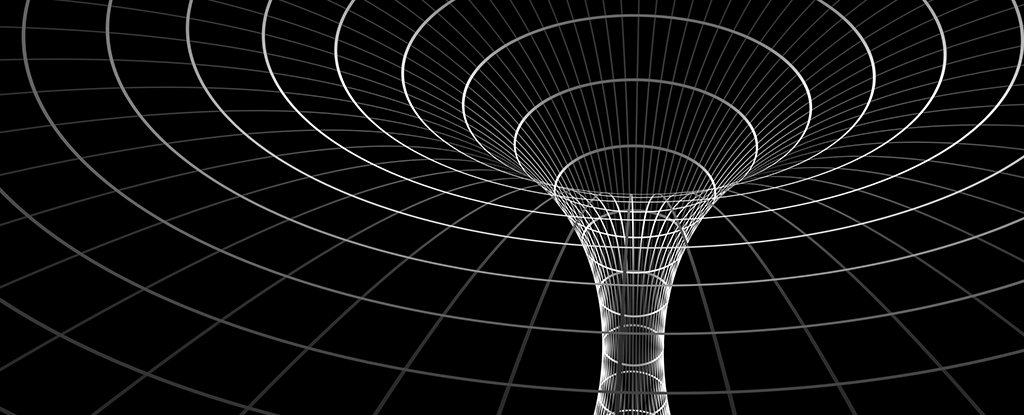

The singular feature of Einstein’s view of gravity is its geometric nature. Curved space-time and geometric gravitation This was a hint that gravity should be treated as a geometric phenomenon. If its path is curved by gravity, that must mean that “straight line” has a different meaning near a massive gravitational body such as a star than it does in empty space. If a light ray is bent in an accelerated system, then, according to the principle of equivalence, light should also be bent by gravity, contradicting the everyday expectation that light will travel in a straight line (unless it passes from one medium to another). As the passenger sees the light miss the second hole, he concludes that the ray has followed a curved path (in fact, a parabola).

But if the elevator is accelerated upward, by the time the ray reaches the second hole, the opening has moved and is no longer aligned with the ray. When the elevator is at rest, a beam of light entering one hole travels in a straight line parallel to the floor and exits through the other hole. Imagine that the elevator has a hole bored straight through two opposite walls. In that case, continued Einstein’s Gedankenexperiment, light must be affected by gravity. And if he were to see the ball sink toward the floor, he could not tell if that was because he was at rest within a gravitational field that pulled the ball down or because a cable was yanking the elevator up so that its floor rose toward the ball.Įinstein expressed these ideas in his deceptively simple principle of equivalence, which is the basis of general relativity: on a local scale - meaning within a given system, without looking at other systems - it is impossible to distinguish between physical effects due to gravity and those due to acceleration. If he releases a ball from his hand, it will fall at the same rate, simply remaining where he releases it. In fact, there is no experiment he can do within a sealed falling elevator to determine that he is within a gravitational field. The reason is that both he and the elevator accelerate downward at the same rate and so fall at exactly the same speed hence, short of looking outside the elevator at his surroundings, he cannot determine that he is being pulled downward. A person standing in an elevator with a broken cable feels weightless as the enclosure falls freely toward Earth. He showed that, if the two masses were equal, then all objects would fall with that same gravitational acceleration.Įinstein, however, realized something more profound. Newton explained this by postulating two types of mass: inertial mass, which resists motion and enters into his general laws of motion, and gravitational mass, which enters into his equation for the force of gravity. This led me to the theory of gravity.Įinstein was alluding to a curious fact known in Newton’s time: no matter what the mass of an object, it falls toward Earth with the same acceleration (ignoring air resistance) of 9.8 meters per second squared. This simple thought experiment made a deep impression on me. Suddenly a thought struck me: If a man falls freely, he would not feel his weight. I was sitting on a chair in my patent office in Bern. In order to begin building his theory, Einstein seized on an insight that came to him in 1907. Nevertheless, since Newton’s theory cannot be conceptually reconciled with special relativity, Einstein turned to the development of general relativity as a new way to understand gravitation. In practice, this is no great problem for describing our solar system, for Newton’s law gives valid answers for objects moving slowly compared with light. However, instantaneous response would require the gravitational interaction to propagate at infinite speed, which is precluded by special relativity. The answer is that Newton’s theory violates special relativity, for it requires an unspecified “action at a distance” through which any two objects - such as the Sun and Earth - instantaneously pull each other, no matter how far apart.

Relativity - Einstein's Theory of General Relativity Roots of general relativityīecause Isaac Newton’s law of gravity served so well in explaining the behavior of the solar system, the question arises why it was necessary to develop a new theory of gravity.


 0 kommentar(er)
0 kommentar(er)
